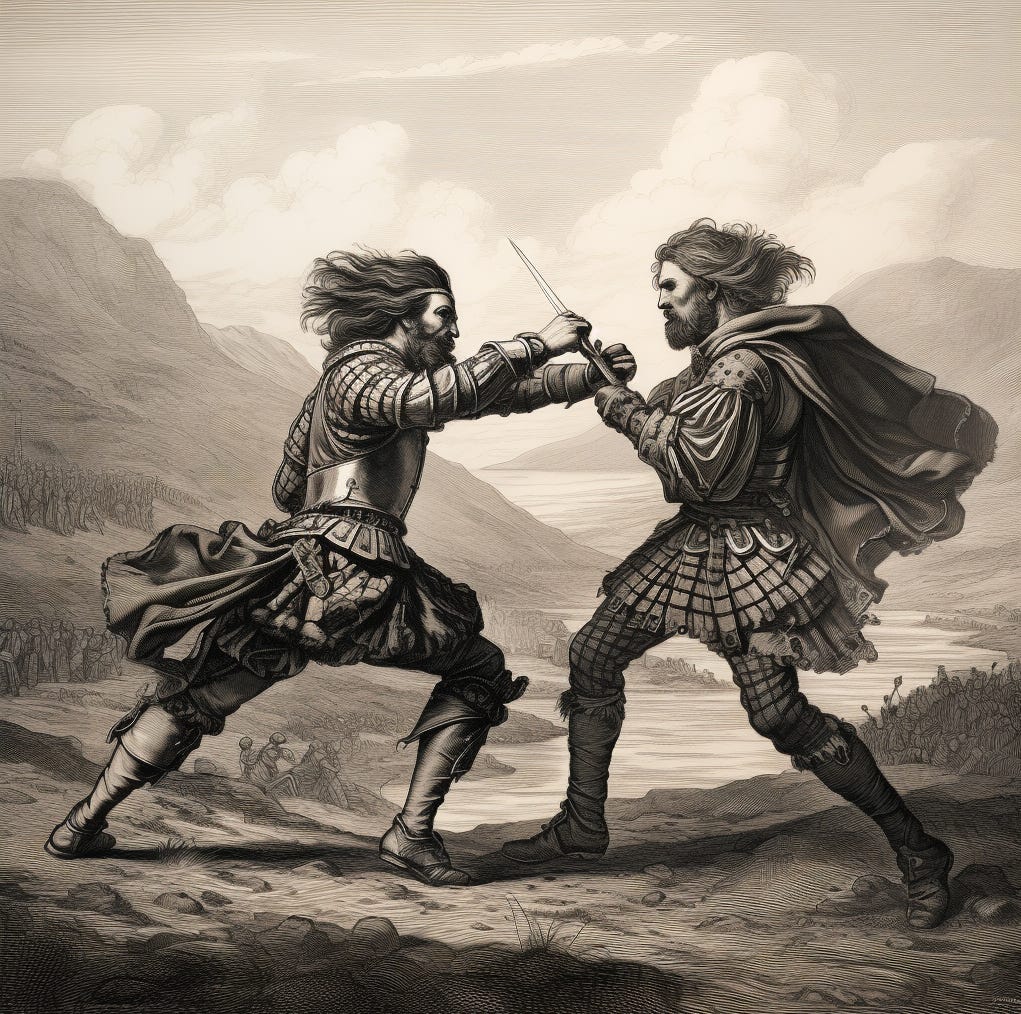The Dramatic Capture of Hotspur by Sir John Montgomery
The annals of history are adorned with tales of valor, rivalry, and dramatic twists. One such captivating story unfolds on the battlefield of Otterburn in 1388, where two formidable knights clashed in a duel that would shape the course of a battle and etch their names into history. This post delves into the riveting capture of Sir Henry 'Hotspur' Percy by Sir John Montgomery during the Battle of Otterburn. To understand the significance of this event, it's essential to delve into the backgrounds of both Hotspur and Montgomery, and the events that led to their fateful encounter.
Background: Who Was Hotspur?
Hotspur, whose birth name was Henry Percy, was born into the powerful Percy family, a prominent noble lineage in medieval England. His nickname 'Hotspur' was earned due to his fiery and impetuous nature on the battlefield. He was the eldest son of Henry Percy, 1st Earl of Northumberland, and was destined to inherit his father's legacy as a military leader.
From a young age, Hotspur displayed a natural affinity for combat and chivalry. His military prowess was established during his involvement in various campaigns, including battles against the Scots and the French during the Hundred Years' War. A renowned knight, Hotspur was respected for his bravery and skill, becoming a central figure in the English military hierarchy.
The Battle of Otterburn: Prelude to the Duel
The Battle of Otterburn was a pivotal moment in the ongoing border skirmishes between England and Scotland. The year was 1388, and both nations were embroiled in the Hundred Years' War. Scotland, in alliance with France, saw an opportunity to exploit the internal divisions within England under the reign of King Richard II. The Scots, under the leadership of James, Earl of Douglas, gathered an army to launch an attack across the border.
Among the English forces, Hotspur took on the mantle of defense. The Scots' decision to attack through both western and eastern routes forced the English to split their defenses. Hotspur's task was to prevent the Scots from advancing through the eastern route.
The Fateful Duel: Hotspur vs. Montgomery
As the Scots and English forces converged near Otterburn, fate intervened to bring Hotspur and Sir John Montgomery face to face. Montgomery was a skilled knight from the Montgomery family in Scotland. A descendant of John de Montgomery, who swore homage to Edward I of England, John Montgomery was no stranger to battles and feuds. His lineage was intertwined with the complex web of noble rivalries and alliances.
Hotspur's impulsive nature led him to challenge Montgomery to a duel, a single combat that would define the course of the battle. The two knights clashed on the battlefield, their weapons clashing and their fates intertwining. In this dramatic encounter, Montgomery's prowess prevailed as he managed to capture Hotspur, seizing his lance and pennon. Defying expectations, Montgomery emerged victorious against the fiery Hotspur.
The Impact and Legacy
Montgomery's capture of Hotspur had profound implications for the Battle of Otterburn. The loss of their leader left the English forces vulnerable, and despite their numerical advantage, they were defeated by the Scots. The battle marked a significant victory for the Scots, boosting their morale and reinforcing their position in the ongoing border conflicts.
Hotspur's capture had ripple effects beyond the battlefield. His ransom, reportedly a substantial sum, was used by Montgomery to build Polnoon Castle. The capture of such a renowned English knight elevated Montgomery's status and influence, solidifying his place in history.
Conclusion
The Battle of Otterburn and the capture of Hotspur by Sir John Montgomery stand as a testament to the intricate dynamics of medieval warfare. In this clash of titans, two knights from opposing sides crossed paths, and their duel had far-reaching consequences. Hotspur's fiery spirit was quenched by Montgomery's strategic prowess, altering the course of the battle and reshaping the histories of both England and Scotland.





